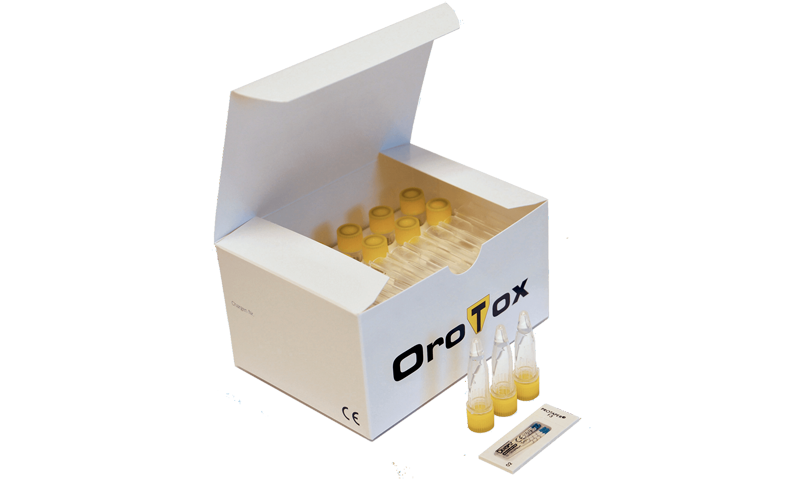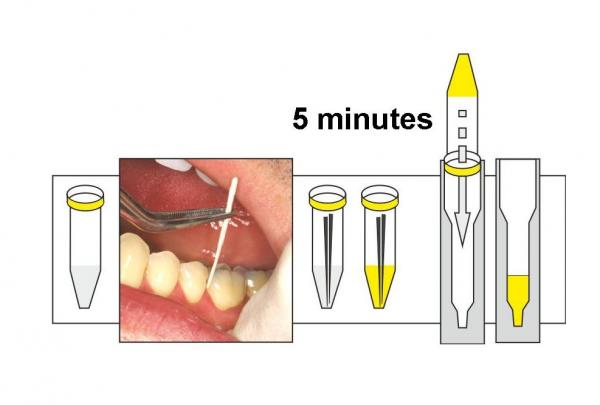Root Canal Treated Teeth and Your General Health – A New Test!
by Dr. McBride | Date Published: 2019-09-05 | Download PDF ![]()

We had an influx of new patients a few months ago, many of them influenced after having viewed the video documentary, “Root Cause” that extolled the possible health risks associated with teeth having had root canal (endodontic) treatment. Most of these patients had one or more root canal-treated teeth, and they were seeking advice as to whether this was harmful to their overall health. Some of these patients were compromised with bodily health conditions for which they had been seeking remedies. The documentary has been pulled from several internet video subscription services due to pressure from three dental organizations that have indicated that “continuing to host this film is potentially harmful to the public.”
For those of you who would like to learn more about root canals, an article on our website entitled, “What About Root Canals?” would be a good adjunctive read alongside this newsletter.
Go to: https://www.rpmdentistry.com/articles/what-about-root-canals/
The question behind this brewing controversy seems to boil down to whether or not teeth having had endodontic treatment (Endodontically Treated Teeth – ETT) harbor virulent bacteria types, either within or around them, in the absence of clinical or radiographic (x-ray) evidence. Unfortunately, bacterial assessments to test for their internal presence without intruding well into the inside of the tooth with the many nooks and crannies within its root system, makes this an impracticality.
That said, clinical evidence of ETT supporting bacterial activity are: swelling on the gum area adjacent to the tooth; a fistula, or infection pathway that the body burrows to the outside to relieve pressure alongside the gum area of the tooth; and/or sensitivity to pressure, although excess trauma from an uneven bite alone can cause this symptom of pressure sensitivity, with both vital teeth as well as ETT, so this test is inconclusive by itself.
What about ETT that have no symptoms or x-ray evidence of infection? The traditional manner in which asymptomatic (painless) ETT are assessed for their health is x-ray evidence showing either the presence or absence of radiolucency (darkness) around the root areas of the ETT, signifying possible infection. However, this is proving to be invalid, as these routine dental examination x-rays, called single tooth x-rays or “PA’s,” as well as panoramic x-rays, show only one-dimensional views of a three-dimensional tooth, so they are very limited views. Lately, we have been performing computerized sectional imaging called “cuts,” taken from the panoramic view, for all new patients with ETT. This allows us to examine the ETT in multiple dimensions. Interestingly, over one half of ETT that appear normal on the routine PA and panoramic views show dark spots on their root areas using these multiple dimension views.
Another question then arises: Can either type of ETT (absent of clinical signs or symptoms with or without x-ray signs of infection) affect an individual’s general health? The posture of the Dental Wellness Center is that ETT may or may not be injurious to the host, depending upon the actual toxic load available in these areas imposed upon the relative state of the individual’s genetics and state of immune health at any particular time. These potential areas housing bacteria may not influence the health of a person with a robust immune system, but could be more influential with individuals having chronic conditions such as inflammatory bowel disease (IBD), AIDS, cancer, diabetes, and certain genetic disorders such as Guillian-Barre, MS, lupus, chronic Lymes disease, etc.
The Canadian dentist Dr. Weston Price’s research in the 1920’s and 1930’s, followed up by that of Dr. George Meinig (who was a root canal specialist) in the 1990’s, suggested that ETT showing no hard evidence of being infected might not need to be removed. Dr. Price stated: “The governing factor which must dominate the decision for a dentist or patient as to whether or not a root canal treatment should or should not be retained, depends upon that person’s defense system and any family genetic problems s/he may have inherited.” In fact, Dr. Price found that 25 percent of patients with family histories free of degenerative diseases, who had excellent immune systems, could expect to have and retain root canal fillings and live without complications. So, according to both Meinig and Price, root canal treatments can be and are usually successful in genetically strong patients who have excellent immune systems.

Exciting news! We have recently instituted special testing for any root canalled tooth, called the Orotox test. Potentially bad, anaerobic (not needing oxygen for survival) root canal bacteria leak out through a membrane that enwraps each tooth, called the periodontal membrane. We can access this biological material with small, absorbent “paper points” that soak up the fluid within the crevice between the gum and tooth (sulcus). The points are then placed in a chemical agent to examine for the presence of toxins and bacteria types that are virulent. The result is obtained in five minutes when the color after the reaction is compared with a colored template. The intensity of the color highlights the amount of toxins present that have leaked through the membrane from the inside of the ETT. From this result, along with other diagnostic data as cited above, a decision can be made as to whether or not to retain the tooth. This is another tool offered by the Dental Wellness Center to determine the relative health of your oral system and how it affects your overall health!
Caveat: we do not offer this procedure a la carte at the DWC, for good reason. If a person has gum inflammation or infection (gingivitis; periodontitis) from uncontrolled bacterial plaque (biofilm) within the sulcus area fluid to be measured, the Orotox test would be skewed because these same types of bacteria can also lie within the root canalled tooth. The fact is that 97% of new patients entering the Dental Wellness Center have some type of gum issues, such as bleeding upon measuring these areas, and over 70% of these patients had been receiving regular cleanings, therefore we cannot offer the Orotox test “a la carte.” It would be nice if things could be that simple, but the mouth is an interrelated system and as such, cannot be evaluated based upon a single member. See article The Holistic Hygiene Arm of The Dental Wellness Center
The following link will take you to more extensive information relative to this subject, along with links within the article itself: http://www.positivehealth.com/article/dentistry/dental-infections-why-you-should-be-concerned
©2024 Robert P. McBride DDS, Inc. All Rights Reserved.
